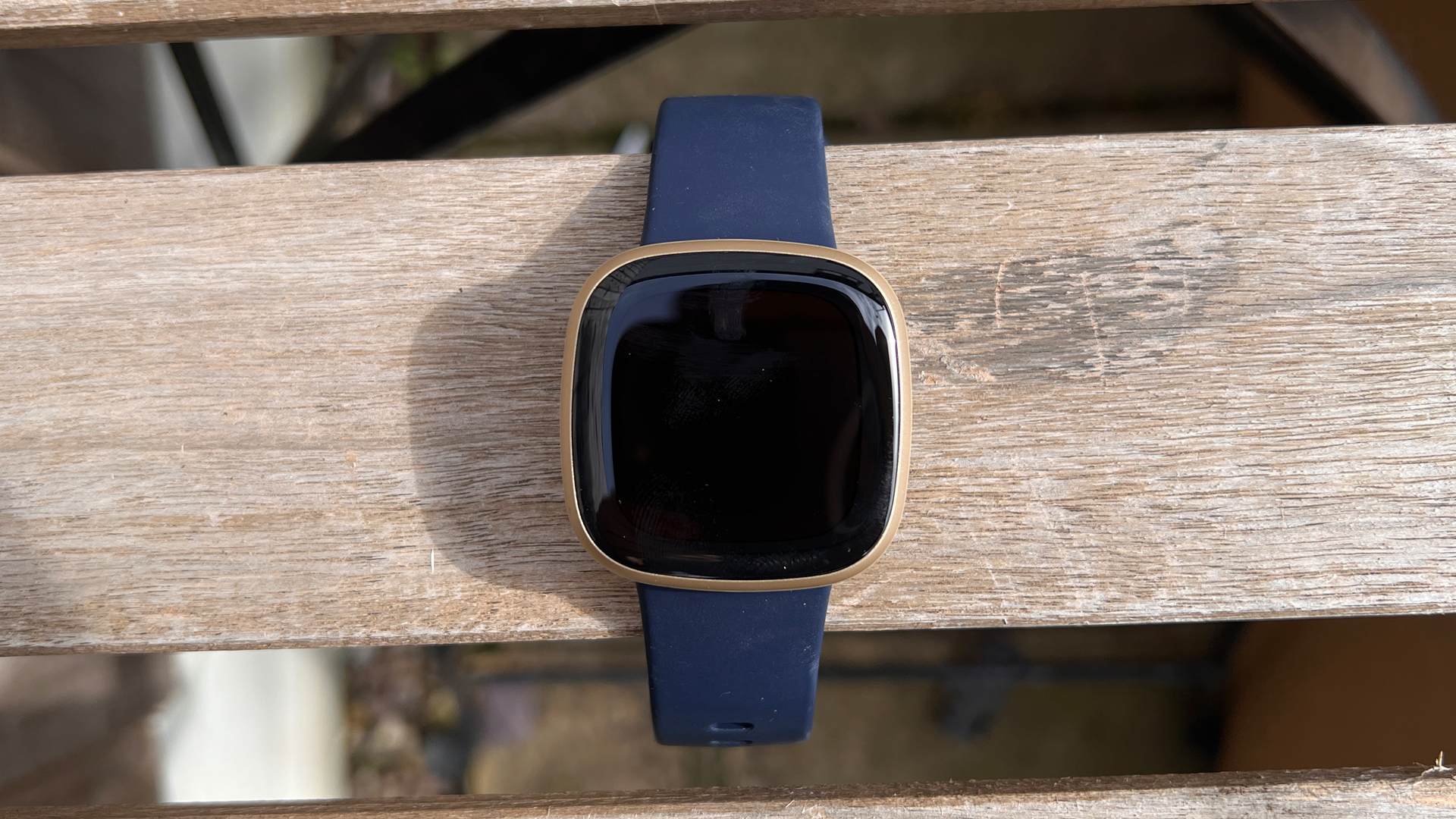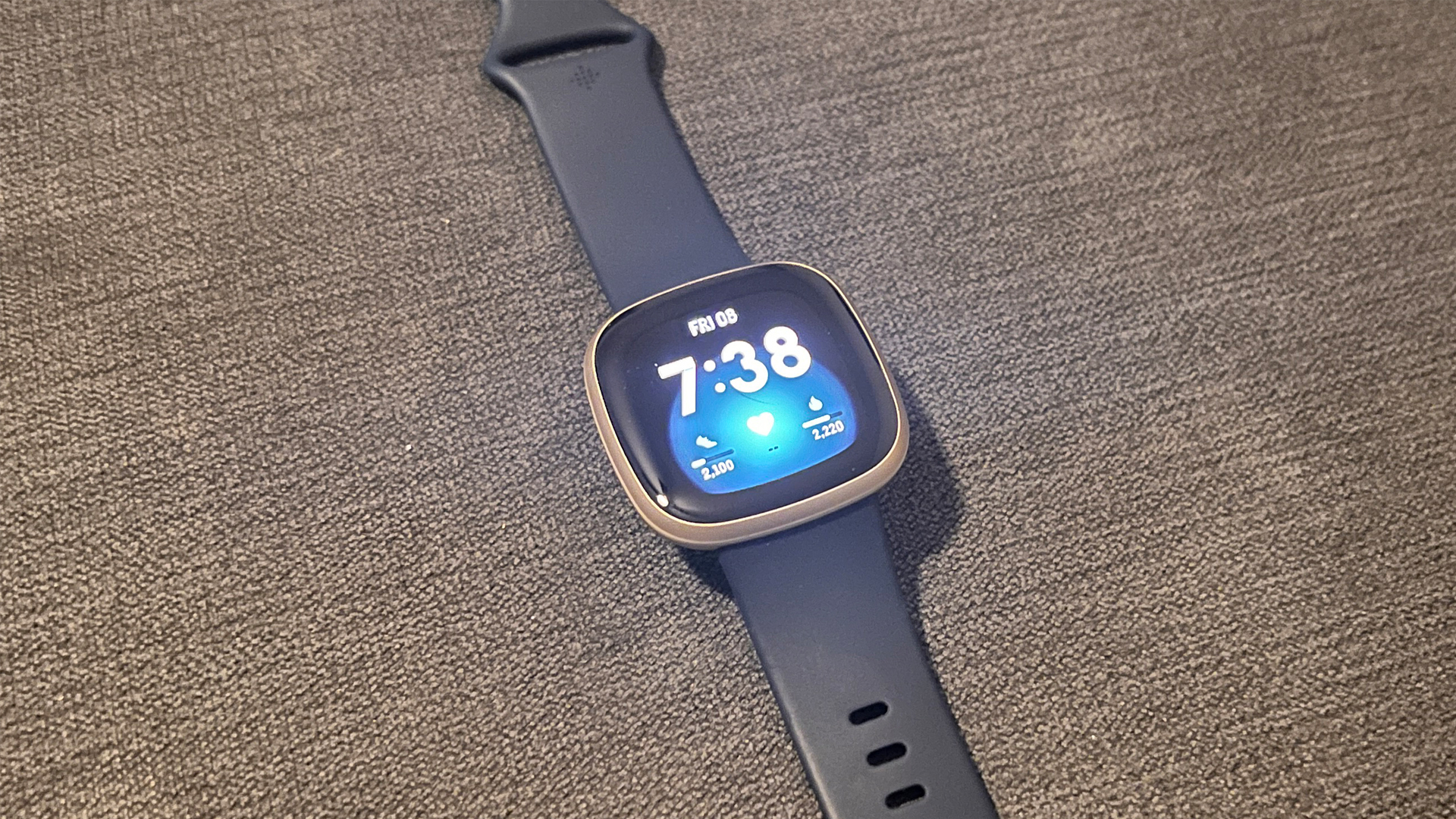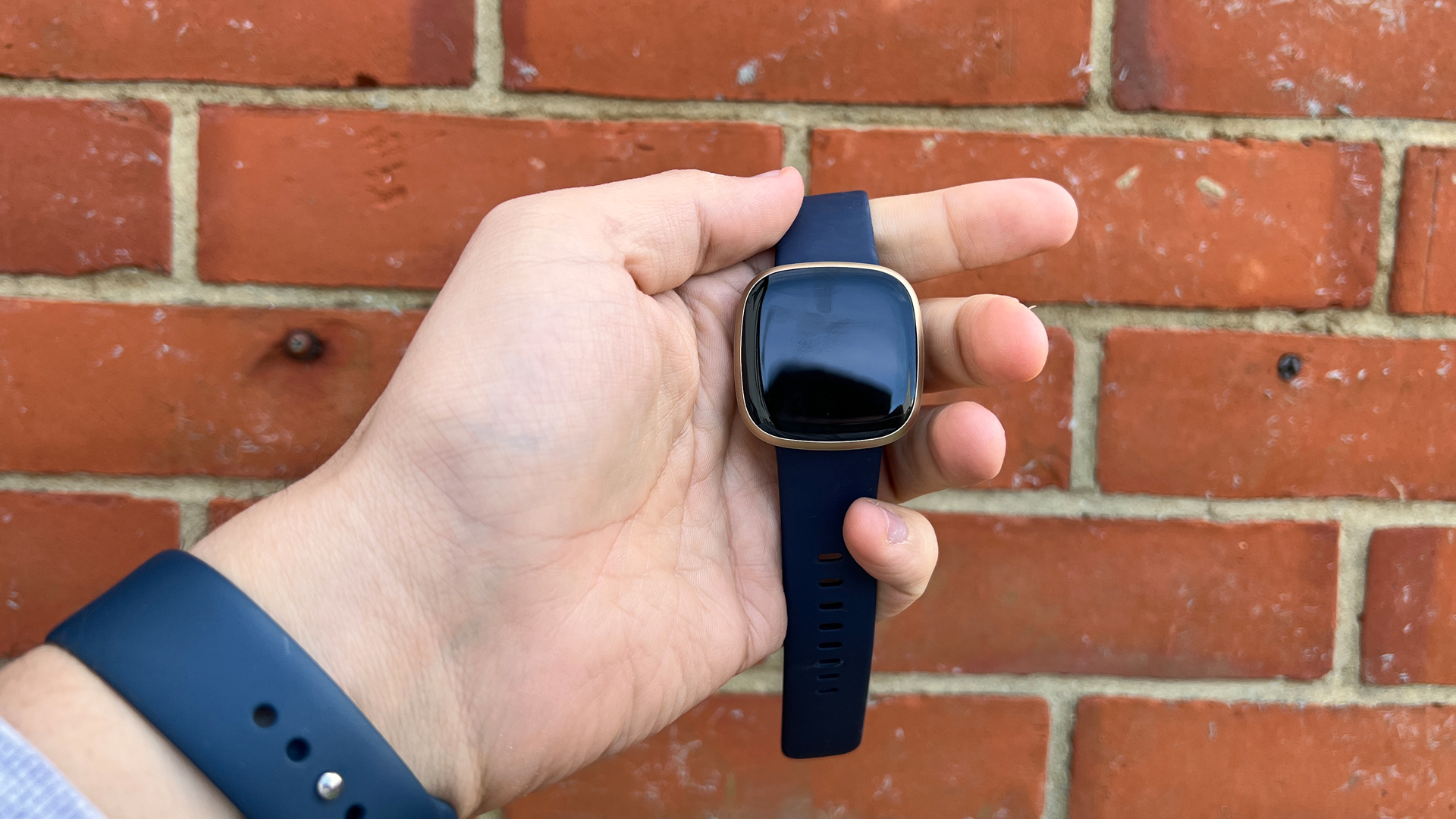Live Science Verdict
Fitbit’s “all purpose” smartwatch will be ideal for a huge majority of customers that don’t need the advanced stress tracking of the Fitbit Sense.
Pros
- +
Low-profile design that looks smart
- +
Nice display
- +
Great pricing
Cons
- -
Lacks offline audio playback from all but two streaming services
Why you can trust Live Science
Fitbit has grown its lineup of fitness trackers and smartwatches over time to offer a little of something for everyone, and its Versa 3 is likely to hit the sweet spot for most people.
That’s thanks to a very attractive price point of around $179.95/£169.99, as well as a huge array of sensors that make it an ideal first smartwatch or fitness tracker. Sure, the Charge 5 is smaller (check out our Fitbit Charge 5 review to find out more), but the 1.58”/4cm display makes the Versa 3 much more readable for just about anything.
Software: Fitbit OS
Compatibility: iOs and Android
Battery life: Six days approx
Display: 1.58" (AMOLED)
GPS: Yes
Water resistance: 5 ATM
Heart rate monitor: Yes
Sleep tracking: Yes
Plus, if you’re less interested in the stress tracking setup on the Fitbit Sense then it’s a hefty chunk cheaper for roughly the same feature set.
The Versa 3 can track your heart rate, temperature, blood oxygen level, and of course, your steps, calories burned, and plenty more, all at half the price of an Apple Watch Series 7. In fact, you could put those savings toward Fitbit Premium membership, which can make a huge difference to your fitness planning and goals.
Nevertheless, the Versa falls victim to the main shortcoming we’ve had with other devices offered by Fitbit, namely offline music playback being absent unless you’re on Deezer or Pandora.
Does it do enough to earn a place in our round-up of the best Fitbits? Here's what we made of it, after several weeks of testing.
Price and release date
- Launched Sep 2020
- Costs $179.95/ £169.99
The Fitbit Sense was launched in September 2020. It retails for and $179.95 in the US and £169.99 in the UK, but can be found for a little less. It comes with a six-month free trial of Fitbit Premium, which we’ll cover in this review.
Get the world’s most fascinating discoveries delivered straight to your inbox.
Design and display
- Easy-to-read 1.58" AMOLED screen
- No physical buttons - only touch-sensitive controls

If you’re coming to the Versa 3 from the Versa 2, you will be surprised at how familiar much of the design is. Both look almost identical, with a rounded square design that the manufacturer also carried over to the Fitbit Sense.
That’s no bad thing, however. The design remains low profile, which is impressive given the sheer number of sensors buried beneath its 1.58-inch screen – which, by the way, offers a higher resolution than the Versa 2.
In terms of color you’ll be able to choose from Soft Gold aluminum (as per our review), or black aluminum. That may sound limited, but bear in mind you can customize your strap color, too, and there are longer straps included in the box.
Bands can come in different materials and colors, but the basic option included is an “infinity band” which is essentially analogous to Apple’s “sport band”. It’s comfortable (we had to go for a larger option) and once you adjust it it’s comfortable enough to wear all day and night.
As with the Sense, there are no physical buttons. Instead there’s a touch-sensitive button that can call Alexa, with a double-tap bringing up four shortcuts for chosen activities or data for you to peruse.
Fitbit may have begun with its slimline displays, but the square panel here shows much more information at a glance - be that your steps, heart-rate, or notifications from your connected phone.
It’s AMOLED, too, which offers better contrast than LCD displays found on some fitness trackers, making it easier to read in direct sunlight.
Features
- Stress tracking and SpO2 monitor
- Daily Readiness Score available

The specification sheets for the Versa 3 and the Sense are, perhaps surprisingly, almost identical. That means that almost everything from Fitbit’s more expensive model is here on the mid-range model, including waterproofing and the impressive six day battery life.
Downloading the Fitbit app on your iPhone or Android device will give you access to Alexa (there’s no native support for Siri, and it appears Google Assistant is only available on the Sense), and enable Fitbit pay via the Versa 3’s NFC chip.
In terms of sensors, there’s a fair amount to take in. Fitbit Versa 3 can track your daily activity, including workouts triggered manually or by automatic detection. Whether you’re running, walking, hiking, swimming, cycling or otherwise moving, you’ll be tracked for calories burned, distance travelled, and plenty more.
There’s an SpO2 sensor, too, enabling you to track blood oxygen levels while you’re asleep, as well as the opportunity to track your menstrual cycle.
You can also track stress levels, although the Versa 3 lacks the Sense’s EDA scan for tracking stress through physiological means. Instead, it offers a questionnaire and tracks your sleep and heart data to build a stress score. While it works off less data than the Sense, it may still be handy for identifying triggers for stress.
The Sense’s ECG is also missing, but sleep tracking is just as excellent. Fitbit really is some distance ahead of many of its competitors, including Apple, thanks to its devices’ excellent battery life and the way you don’t necessarily need to even check your sleep data, because it rolls it into your Daily Readiness Score (which is part of Fitbit Premium).
Six months of Fitbit Premium is included in the box, meaning you can take advantage of guided programs that encompass not just exercise but sleep and diet. It’s a solid option that retails for $9.99/£7.99 per month or $79.99/£79.99 per year once your trial is up.
One of the best features is, as mentioned previously, the Daily Readiness Score. It helps take some of the guesswork out of making a choice between exercise or recovery, and is great for setting you up for success while also adjusting projections if you had a rough night of sleep, for example.
Fitbit Premium is by no means a prerequisite, but six months is more than enough time to see if it’s worth investing in for you.
Performance
- Good GPS tracking and heart-rate monitoring
- Solid battery performance of six days

The Versa 3’s big advantage over its predecessor the Versa 2 is that (again, like the Sense), it includes a built-in GPS. That means it can track a run, walk, cycle, or sack race (ok, we’re kidding with that last one) without needing your iPhone or Android device to be with you.
While there were reports at launch of some wonky tracking, we’re very pleased to say these seem to have been ironed out. We tracked runs alongside an Apple Watch Series 7 (which costs significantly more) and found the steps tracked to be almost identical, both while walking and running.
When it comes to heart-rate tracking, the Fitbit tracks well both at rest and when working out. The data produced matched that of the Apple Watch, and while there’s no ECG, it did notify us when our heart rate dropped lower than anticipated. In fact, it let us know before the Apple Watch did.
- Read more: Fitbit vs Apple Watch
As we mentioned earlier in the review, though, you may still want to bring your phone with you anyway. That’s because the Versa 3, like the Charge 5 and the Sense, offers no option to download music to it unless you’re subscribed to Deezer or Pandora.
That means Apple Music or Spotify users, or even those just wanting to listen to a podcast or two, are sadly going to need to take their phone out with them for the foreseeable future. It’s a real shame, too, because without this caveat we’d have no qualms in awarding the Versa 3 five stars. Music can be such an important motivator that its absence here (or at least its restriction to just two services) feels short-sighted. Thankfully, you can still skip tracks using the Versa 3’s on-screen controls.
Finally, a note on battery life. Both the Versa 3 and the Sense advertise six days of battery life, and while the more expensive Sense’s additional range of sensors meant it hit around five to five-and-a-half days in our testing, the Versa 3 made it to six days. Depending on your usage, that could be a big boon in favor of the Versa 3.

Verdict
Music woes aside, it’s hard not to recommend the Fitbit Versa 3 as a general purpose smartwatch and fitness tracker. It arguably falls more into the latter camp, with its focus on sensors and data and slimmer set of all-purpose apps than something like watchOS offers, but for the price it really is an excellent option.
Its battery life is exceptional, its display is bright and legible, and it offers the GPS lacking from its predecessor to take things to the next level.
If this isn’t for you
If you’re looking for even more data about your body, notably a stress-tracking EAC or ECG feature, the Sense might be for you.
If you’re on iPhone, however, you may want to invest in an Apple Watch because of its broader array of apps, Siri integration, and larger display (at least on the Apple Watch Series 7). Doing so comes at a steep cost, though, and we’d still recommend the Versa 3 over the not-long-for-this-world Apple Watch Series 3.
Lloyd Coombes freelance tech and fitness writer for Live Science. He's an expert in all things Apple as well as in computer and gaming tech, with previous works published on TechRadar, Tom's Guide, Live Science and more. You'll find him regularly testing the latest MacBook or iPhone, but he spends most of his time writing about video games as Gaming Editor for the Daily Star. He also covers board games and virtual reality, just to round out the nerdy pursuits.


